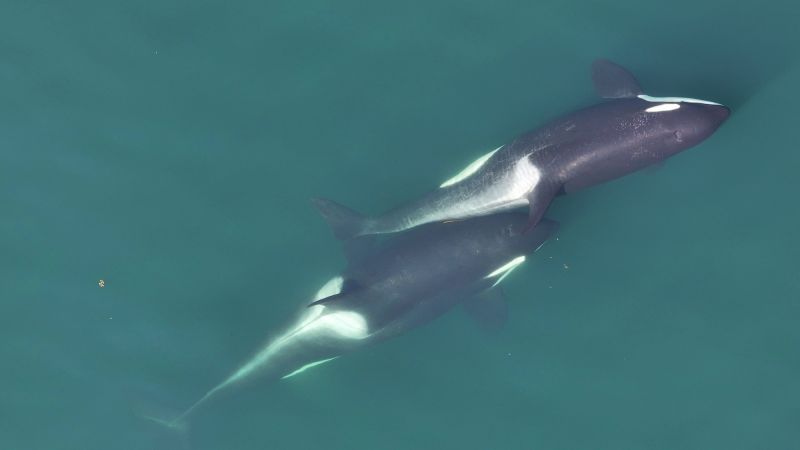In a remarkable discovery, behavioral ecologist Michael Weiss was analyzing fresh drone footage of orca pods in the Salish Sea when he made an observations that caught his attention. He noticed one of the killer whales carrying a green object in its mouth, alongside an intriguing behavior where some orcas were rubbing against one another for extended durations, sometimes lasting as long as fifteen minutes. Initially dismissive of the peculiar behavior, as Weiss noted, “whales do weird things.” However, repeated observations revealed consistent patterns that prompted further investigation and scrutiny of the footage.
Zooming in on his recordings, Weiss noticed something unmistakable: the killer whales were using strands of kelp to rub against each other in what the researchers later termed “allokelping.” Over a span of merely two weeks in 2024, Weiss and his team documented thirty instances of this behavior exhibited by the southern resident orcas, which constitutes a unique population of killer whales. Their findings were published in a paper in *Current Biology*, elucidating that these cetaceans were detaching strands of bull kelp from the seabed to engage in this grooming behavior.
The paper highlights that this behavior represents the first documented instance of cetaceans utilizing an object as a grooming tool. Historically, tool use among animals has been primarily associated with finding food or attracting mates, making “allokelping” a peculiarity in the natural world. Weiss, who is the study’s lead author and serves as the research director at the Center for Whale Research in Washington state, expressed excitement at the unconventional use of an object, indicating that it diverges from typical animal behaviors.
Two principal hypotheses are offered by Weiss and his team regarding the reasoning behind this newfound behavior. First, allokelping may serve as a hygiene method, allowing the killer whales to treat or remove dead skin. The southern resident orcas have been reported to suffer from increased skin lesions, particularly gray patches, suggesting that allokelping could be employed to alleviate such ailments. Alternatively, Weiss proposed that this behavior may serve to strengthen social bonds, as the pairs of whales observed engaging in allokelping were typically closely related or similar in age.
Deborah Giles, an orca scientist associated with the SeaDoc Society, supported this viewpoint by emphasizing the strong social connections among orca pods. She pointed out the species’ tactile nature, which is aligned with their notably developed brains. Each population of orcas possesses its distinct dialect, enriching their communication capabilities.
Furthermore, Janet Mann, a behavioral ecologist from Georgetown University, provided insights into the skin sensitivity of cetaceans. She noted that orcas engage in rubbing behaviors on various surfaces, yet the reciprocation of tool use for grooming remains unusual. Mann remarked, “What the study shows is that we know very little about cetacean behavior in the wild,” hinting at the importance of advancing technologies, such as drones and high-resolution cameras, for further exploration of marine mammal behavior.
The significance of the discovery is amplified by the challenges faced by southern resident killer whales, which are on the brink of extinction and are protected in both the U.S. and Canada. With only 74 individuals remaining, their continued existence is threatened by habitat degradation due to human activities, climate change, and the decline of essential environmental resources such as bull kelp, which also serves as nursery habitat for juvenile chinook salmon, a critical food source for these killer whales.
The implications of this newly discovered behavior extend beyond mere curiosity, as it encourages scientists to delve deeper into the societal and ecological ramifications of allokelping. This novel behavior could represent a cultural practice among these marine mammals, emphasizing the necessity of safeguarding their habitats to ensure their survival. Philippa Brakes, a behavioral ecologist not directly involved in the target research, highlighted the study’s relevance, suggesting that cultural practices play a vital role in the adaptation of animals to their rapidly changing environments.
Overall, the allokelping phenomenon reveals the depth of social interactions and the complexities underpinning animal behavior, ultimately necessitating further inquiry into this remarkable cetacean activity. As researchers like Weiss and his team continue their investigation into this behavior, the understanding of orca culture, social structures, and ecological interdependencies is poised to grow significantly.












